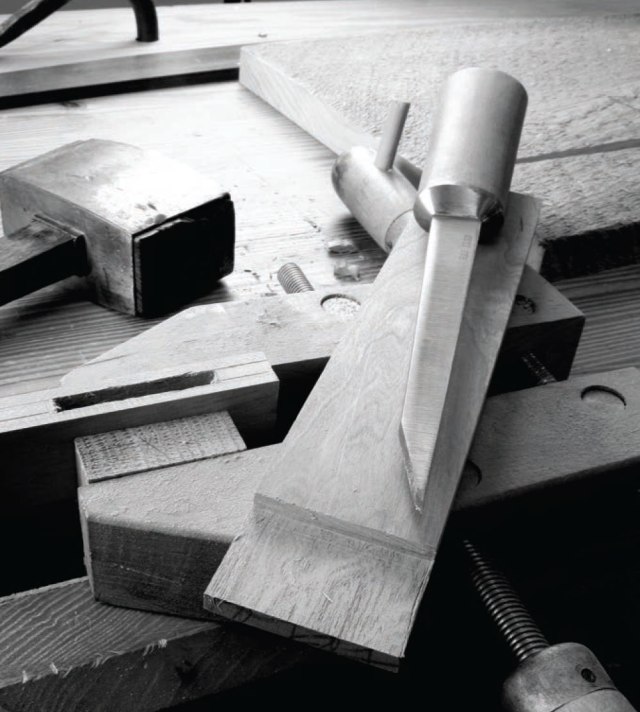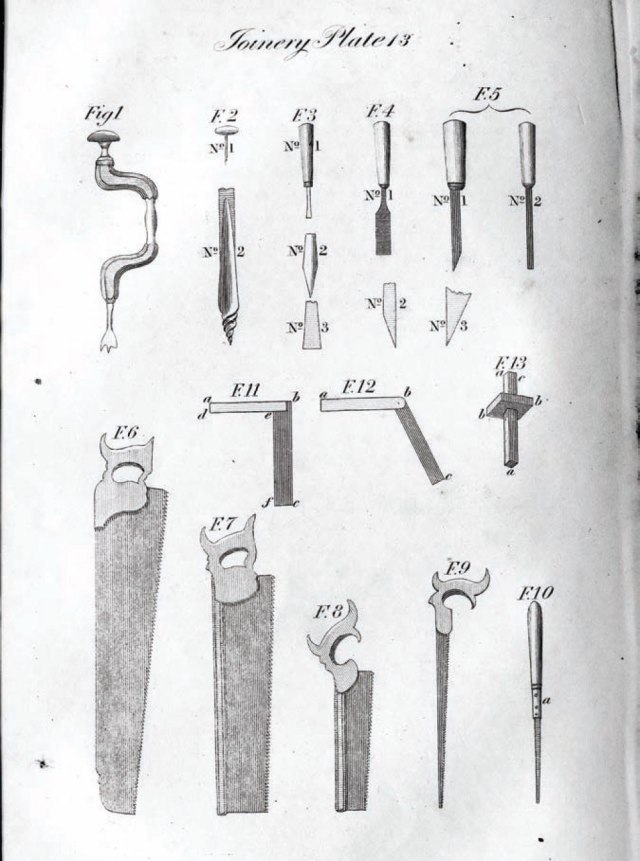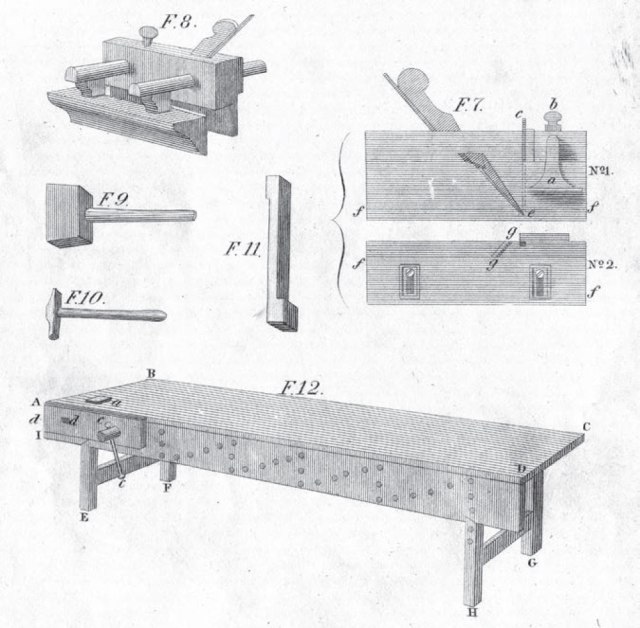
This is an excerpt from “The Joiner and Cabinet Maker” by Anon, Christopher Schwarz, and Joel Moskowitz.
When I decided to build the three projects featured in “The Joiner and Cabinet Maker,” my plan was to assume the role of Thomas W., the book’s young apprentice. I was going to venture forth with a tabula rasa in hand and discard the woodworking knowledge I’d accumulated since childhood, including my preferences for certain techniques and tools. And I would simply build the three projects as Thomas did, and see what I could learn by spending about five months in his shoes.
But as with all projects, things rarely get built “to the print.”
As I started building the Chest of Drawers, which took more than two months of nights and weekends, my youngest daughter started following me whenever I would traipse down the stairwell to my workshop below our living room.
Katy, 8, would watch me work, clean up behind me and ask questions. Then one day as I was paring out some garbage from between some dovetail pins, she asked if she could try it. I handed her the chisel, cradled her hands in mine and let her feel what it was like to slice the end grain of American black cherry.
After making five or so cuts together she asked to do it herself. It was like the time I let go of the handlebars while teaching her to ride a bike. My hands hovered over hers and my mind raced. What the heck was I thinking? Did I think I could catch the chisel before it dove into someplace it wasn’t supposed to go? Surely, I thought, one of us is going to the emergency room this evening.

Nothing bad happened. Katy pared close to the baseline, and I told her I would finish the job. She asked if she could borrow a saw and wood to practice at the far corner of my bench while I finished up. I agreed.
And it was at this moment that this whole book changed. Throughout the rest of the project I treated Katy as much like an apprentice as I could. She warmed the hide glue. She assisted with glue-ups. She kept the shop clean.
But most of all she asked an endless stream of questions about planes, saws, chisels and wood. When I didn’t have anything for her to do, she would practice planing or sawing on some scrap pine. I kept watch over her out of the corner of my eye and would correct a wayward stance or grip. When I performed an operation, such as sharpening my smoothing plane, I let her watch. Then I asked her to imitate me and sharpen a block plane blade.
I didn’t dive deep into the theory behind everything. I just showed her the best practices I knew, with all the shortcuts and warnings I could think of. Theory, I figured, was something that could come with later study on her part.

It wasn’t long before I realized I should take a different tack with my contribution to “The Joiner and Cabinet Maker.” Instead of merely mimicking Thomas’s behavior, I decided to expand my reach. Yes, I would cut dovetails the way that Thomas did. But I would also cut dovetails the way I was taught. And I would compare the approaches and examines the advantages and disadvantages of each.
There wouldn’t be any way I could turn the book into a survey of all the joinery methods out there (that would be a much longer book). But I could offer this book as a guide for my daughter and other woodworkers who wish to explore hand work through two sets of hands.
Here in these pages is what I have learned during my long internship as the editor of two woodworking magazines. As a guy who has gotten to visit the shops of fantastic woodworkers all over the world. As a guy who reads old woodworking books like they were written by Dean Koontz.
And here also is how one anonymous but knowledgeable writer thought woodworking and joinery should be done circa 1839.
There are lessons to be learned from both approaches. And Katy, I hope that by the time you are old enough to read this that you are able to decide for yourself how to go forward in the craft.
–Meghan B.